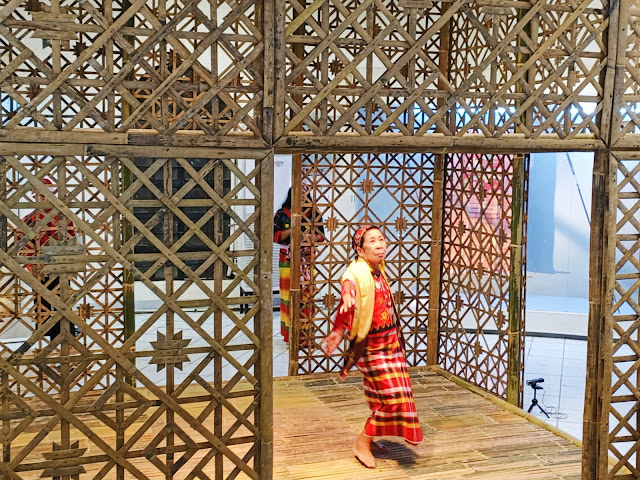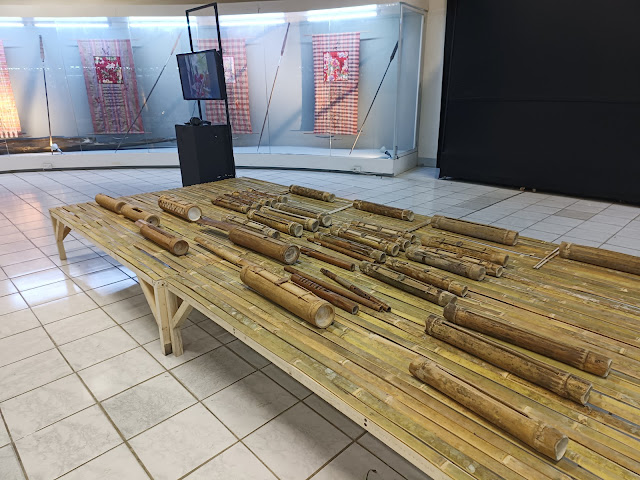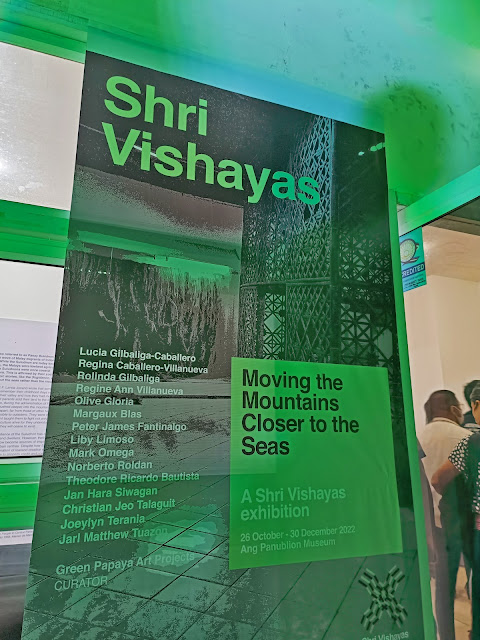by Christian George Acevedo
The Shri Vishayas Art Exhibit is a cultural and artistic engagement that pays homage to our indigenous roots and presents traditional intersections with rural and contemporaneous cultures.
The mountains of central Panay Island are steeped in culture and heritage derived from the indigenous Panay Bukidnon communities. For centuries, amidst Spanish and American colonization, these people have relatively retained their ways of living and traditions, largely uninfluenced by Western ideals and undisturbed by lowland incursions. Until the late twentieth century, the Panay Bukidnon’s culture has remained relatively unknown to the world outside, until researches and scholarly endeavours by the likes of F. Landa Jocano and Alicia Magos, among others, have highlighted these time-honored beliefs and practices. Their coming was also an opportune time to document a precolonial heritage that ran at risk of demise. Today, the Panay Bukidnon people of Western Visayas are renowned for their epics and chants, creative works, and life ways.
It is this vanishing way of life - not only of the Panay Bukidnon’s, but also those of other indigenous groups in the Philippines and around the world – that forms the core of the Shri Vishayas Art Exhibition, formally opened on October 26, at Ang Panublion Museum, in Roxas City. In his message during the opening program, Norberto "Peewee" Roldan, the exhibition’s lead curator, exposed how multinationals and opportunists abused and misappropriated indigenous cultures for profits’ sake.
The exhibit is an output of a extensive research and fieldwork of the Shri Vishayas Project. Launched in January 2021 by the Green Papaya Art Projects, this is a collaborative engagement that aimed to foster “understanding less-seen, under-appreciated, under-valued, often exploited, and now gravely harassed communities.” The exhibition, on the other hand, showcases the meeting point between the culture bearers of Panay Bukidnon and contemporary art practitioners and cultural workers in the Visayas. Hence, as Peewee mentioned, in viewing the exhibition one must not look at the individual art works, rather, the installation must be viewed as a whole, with each piece merely as part of a huge, complex puzzle.
The name Shri Vishayas is homage to the island’s indigenous past. An emphasis that sends a message that everyone in the island of Panay is a Panay Bukidnon, hence, the need to look after each other and protect our heritage.
One interesting point of the exhibit is that not a painting was displayed. Rather, each art work is either mixed media or an installation. The exhibition occupied the two wings of Ang Panublion – the century-old Water Tank and the Annex building.
At the Water Tank, Peter James Fantinalgo’s "Center-Margins" stands prominently from floor up to the museum's ceiling. An installation of bamboo lattice, locally known as birha, represents the social demarcation during the Spanish period, where the more affluent would use Capiz shell windows. As explained in the exhibit note, "This immersive installation... creates a space that can be approached from multiple sides... turning the space into a meeting point of various engagements." Fantinalgo created the installation in collaboration with his grandfather, Tito Reyes Flamiano, from Cuartero Capiz, who is a master bamboo craftsman.
The opening program’s spotlight focused at the birha where the Panay Bukidnon performed their chant and then the Binanog dance. I liken this to the taktak bukbok, a Filipino house warming tradition where the household would dance or stump on the bamboo or wooden floor to dislodge the dust or unwanted insects. What an energetic way to open the exhibit!
Another point of interest is Mark Vincent Omega's installation with papag, the traditional Filipino bed, which was laid with indigenous bamboo music instruments, like the tikumbo (a percussive chordophone), and suganggang. This installation, created with the help of Roger Gilbaliga, a Panay Bukidnon from Garangan in Calinog town in Iloilo, brings to light the aspects of performance, recordings, and preservation of Panay Bukidnon music.
The Water Tank's circular glass case contains Liby Limoso's "Kalanotan sa Madya-as," which traces Panay Bukidnon's weaving cultures. "In this work, I try to connect the present with the past through images and sounds related to the object lanot (abaca) and place (the Madyaas)," the Ilonggo artist explains.
At the Museum’s Annex, meanwhile, one would see the intricately woven and huge embroidered tapestry by Panay Bukidnon women and artists, featuring scenes from their oral literature. For example, Regina Caballero Villanueva’s Tikong Kadlom, relives the scenes from the first of the Sugidanon epics. Tikum Kadlum is the hunting dog with the gift of sensing the spirits and plays a central point in the story. "Leon nga Bulawan" was the work of Regina’s daughter, Regine Anne, and is inspired by the scenes of Sinagnayan, the seventh of the Sugidanon epics. Their work does not only feature the technique followed in the panubok patterns, they also adopt a similar style to ancient and medieval tapestry.
Olive Gloria's “Parallels in Time, Place and History” is a set of four tapestries representing contemporary settings and issues, although the needlework is grounded on traditional patterns.
The Shri Vishayas exhibit runs until December. Visit Ang Panublion Museum and enrich yourself with our indigenous connections in this immersive experience. The Museum is open from Monday until Friday from 8 am until 5pm.
The Shri Vishayas Art
Exhibition is curated by Green Papaya Art Projects, with the support of the
Roxas City Government, Provincial Government of Capiz, and Outset UK. Participating
artists: Lucia Gilbaliga-Caballero, Regina Caballero-Villanueva, Rolinda
Gilbaliga, Regine Ann Villanueva, Olive Glora, Margaux Blas, Peter James
Fantinalgo, Liby Limoso, Mark Omera, Norberto Roldan, Theodore Ricardo
Bautista, Jan Hara Siwagan, Christian Jeo Talaguit, Joeylyn Terania, and Jarl
Matthew Tuazon.

.png)










